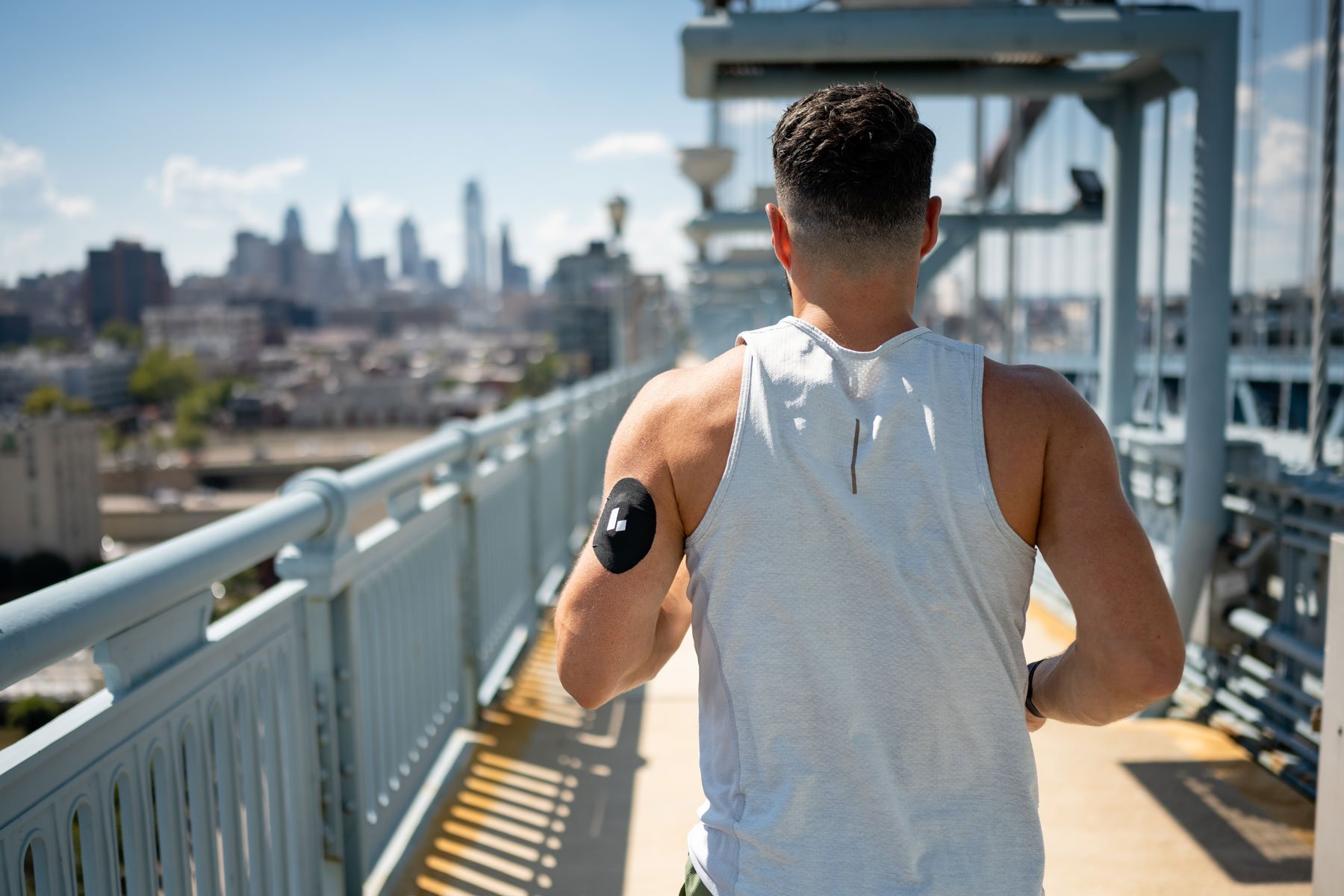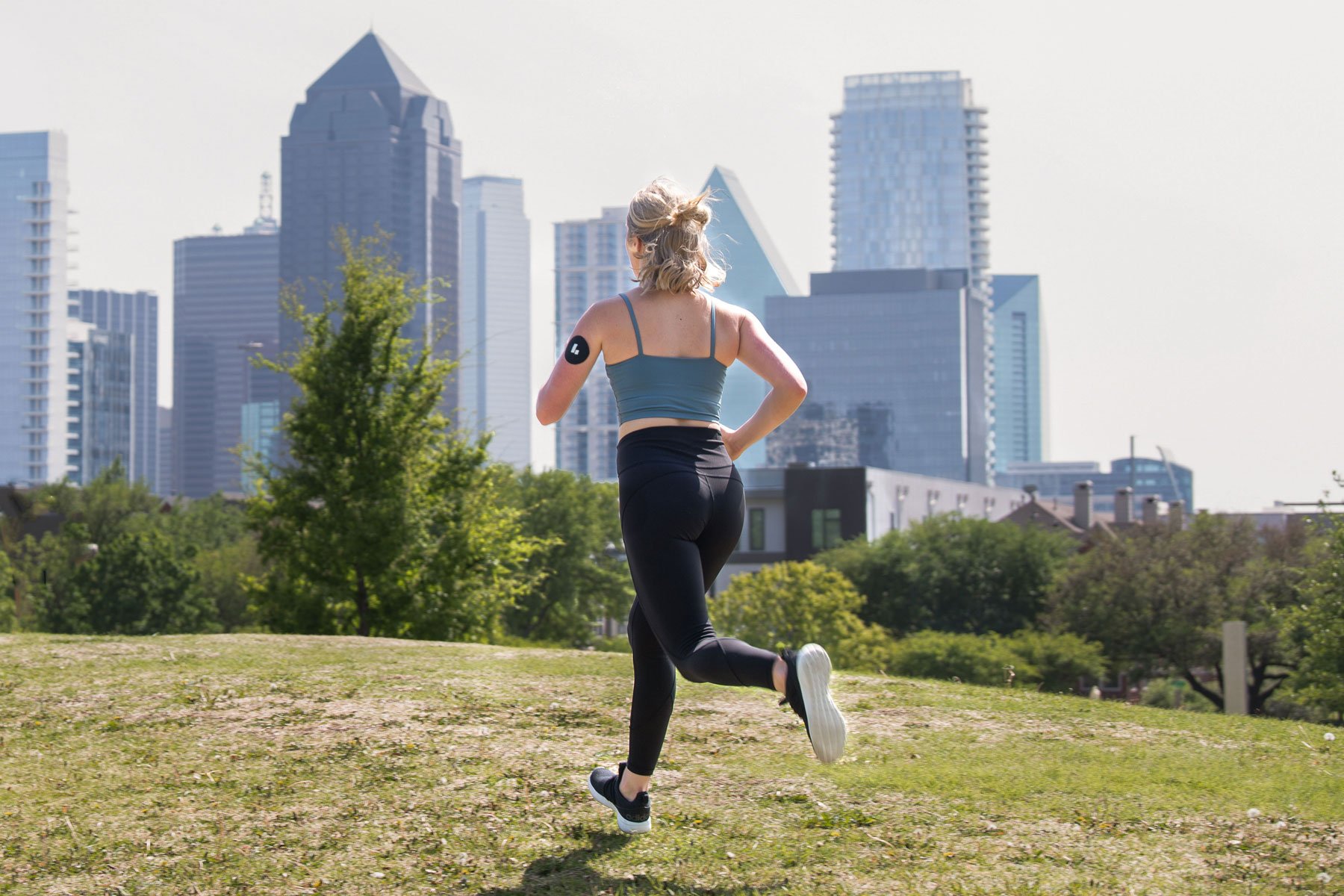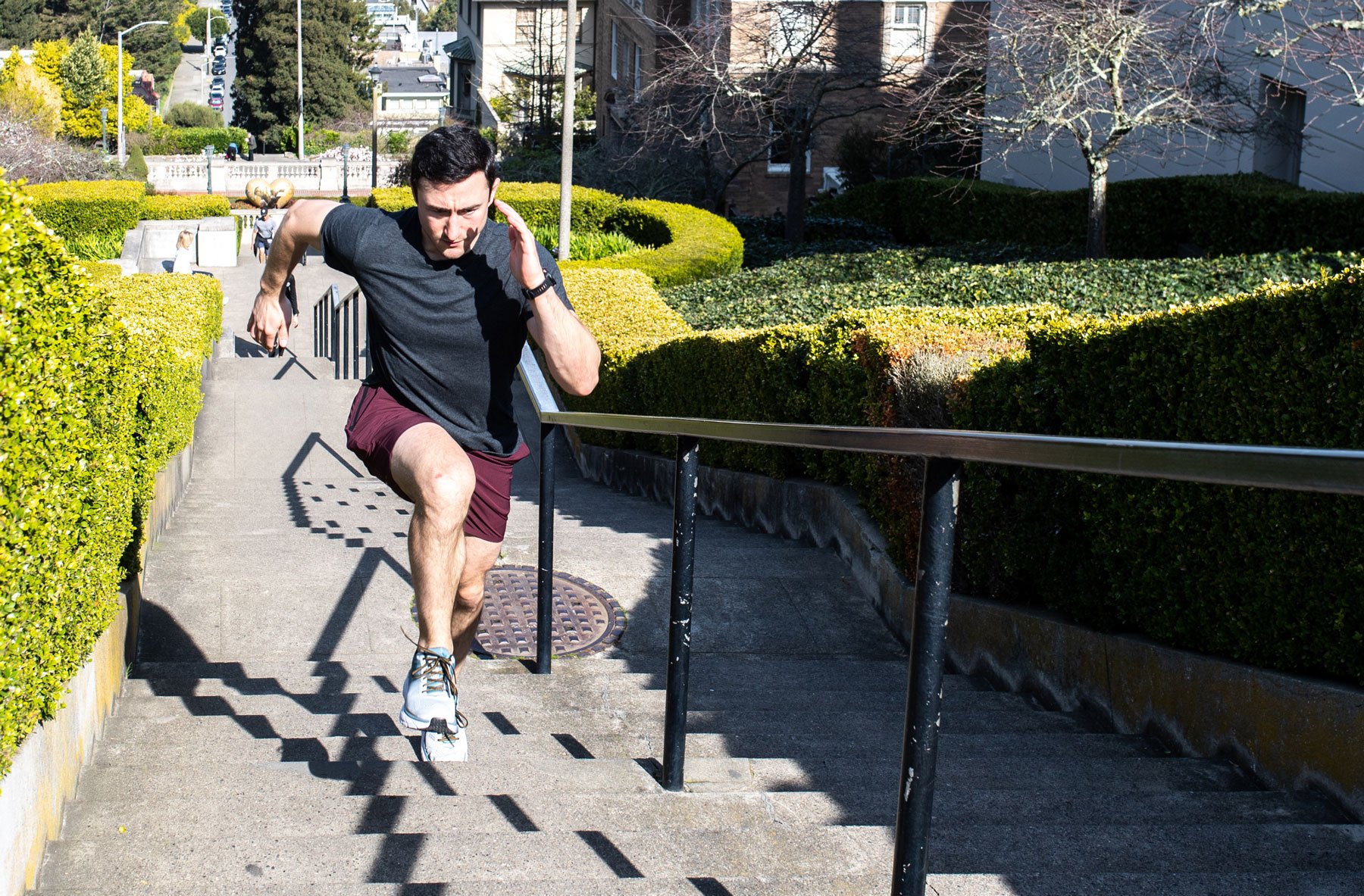Chances are, you’ve heard a lot about high-intensity interval training (HIIT) workouts, where bursts of near-maximum effort alternate with bouts of lower-intensity exercise. You may have also heard that HIIT is more efficient than slow and steady workouts for fat loss and conditioning and that when it comes to cardio, the only effort worth doing is one that’s all out.
Not so fast. In the past decade, scientists, physiologists, and coaches have re-embraced the fitness benefits of slow, steady, “Zone 2” cardio—exercise that keeps your heart rate in a zone between 60 and 70 percent of your overall maximum heart rate—and even discovered some new, unique benefits. In 2014, for example, scientists demonstrated that endurance athletes had greater gains in VO2 Max—a marker of fitness that measures the maximum amount of oxygen your body can use at once—when incorporating Zone 2 than when they only did HIIT and sprint training. Since then, similar benefits have been found for recreational ultra-endurance runners, where slow training helped with aerobic performance and body composition, but also for more high-intensity exercisers like mountain bikers and soccer players. If you want to be able to go really fast, recover, and go really fast again—or if you just want to improve cardiovascular health—experts say that the bulk of your exercise regimen should fall in this Zone 2 range.
“There’s an 80-20 rule with training. About 80 percent of your training should be in an easier zone. Only a small fraction—20 percent or even less—should be at higher intensities” to maximize results, says Matthew Laye, PhD, associate professor at The College of Idaho and chair of the Health and Human Performance Department.
What qualifies as Zone 2 cardio? It’s exercise like running, cycling, or swimming that you do at a pace you can maintain for an extended period—at least 30 minutes, but potentially for hours if you had to, Laye says.
Alex Viada, C.S.C.S., author of The Hybrid Athlete and founder of Complete Human Performance, agrees, saying Zone 2 is done at a pace that’s “almost infinitely sustainable—but it’s still exercise.” In other words, Zone 2 gives you all the health benefits of exercise, such as improving the efficiency of your heart; reducing blood pressure; and lowering the risks of cancer, diabetes, and early death. But unlike higher-intensity sessions, which can leave you feeling wiped out, cause soreness, and require days to recover from, Zone 2 hits a sweet spot that lets you reap the exercise perks without overtaxing yourself, which can make it a more sustainable practice. It also helps you build endurance and helps you achieve metabolic flexibility, which is when your body can easily switch between burning carbs and burning fat for fuel.
But getting into the “zone” of Zone 2 can be challenging, especially at first. People tend to either exercise too hard or go too easy. And Zone 2 is different for everyone (and every exercise) because it’s based on your maximum heart rate. This guide will help you find your Zone 2 and harness its benefits for your heart, metabolic health, and athletic performance.
 Want to learn more about how exercise impacts your metabolic health?
Want to learn more about how exercise impacts your metabolic health?
Levels, the health tech company behind this blog, can help you see how diet and lifestyle choices like more Zone 2 exercise impact your blood sugar. Get access to continuous glucose monitors (CGM), along with an app that offers personalized guidance so you can build healthy, sustainable habits. Click here to learn more about Levels.
What happens in your body during Zone 2 training?
Exercise physiologists generally define five heart rate zones based on the intensity of your workouts. As you increase your pace and resistance, your heart rate increases.
At different heart-rate zones, your body uses different fuel sources to create energy for your cells, which drives particular reactions in the body. For example, at lower heart rates (Zones 1 and 2), your body primarily uses fat as a fuel source for your muscles. (Burning fat is also more energetically efficient than burning glucose; that, along with the size of our fat stores, is part of why we can perform Zone 2 exercise for so long.) At heart rates that take you above your ventilatory threshold, or VT1 (typically Zones 3, 4, and 5), when your breathing rate increases along with your heart rate and you can no longer talk comfortably, your body starts to use more glycogen (stored glucose) from your muscles to supplement the fat.
“There’s a mild energetic crisis in the cell,” says Dominic D’Agostino, PhD, Levels advisor and associate professor in the Department of Molecular Pharmacology and Physiology at the University of South Florida Morsani College of Medicine. Your cells aren’t getting energy—specifically, a chemical called adenosine triphosphate (ATP), which your cells use for energy—from the oxidation of glucose and fat. So, D’Agostino says, other mechanisms for energy production get recruited: One of those is glycolysis, the breakdown of glucose to make more lactate, one of your cells’ preferred energy sources.
Your body makes lactate all the time, but at lower levels of work, it can deliver most of the energy to your cells with fat. But above VT1, your body produces more lactate than your muscles, and mitochondria can clear out with the oxygen available. Your body’s making more fuel because it senses a need, but it can’t use it all—so lactate starts to build up. Since your muscles can’t be fueled anymore, a build-up of blood lactate is tied to lower muscle performance. And though lactate buildup doesn’t cause muscle soreness, as was previously believed, its increase does coincide with fiber acidosis, a burn in your muscles that tells you to stop and, ultimately, results in more delayed onset muscle soreness, or DOMS.
All this is to say that above VT1, you get tired—your muscles run out of fuel, and you can’t continue. But Zone 2 training occurs just below VT1. That’s why you can train at this intensity for an extended period without feeling the burn in your muscles.
“You can do a lot of [Zone 2 exercise], you can do any modality you want, and you still get all the aerobic benefits” without needing as much time to recover, Viada says. Doing conditioning work this way lets athletes save their high-intensity resources for when they need them—lifting heavy, sprinting, or doing their other sports training, for instance. Viada compares Zone 2 to “building your aerobic engine,” but doing it in a way that doesn’t wear the engine down. That way, you can unleash the engine’s full horsepower when needed, like for speedwork in a race or drive to the goal in a soccer game.
Because Zone 2 is easier to do and doesn’t make you sore or overly tired, it’s more achievable for many people than super-intense workouts. In fact, Zone 2 is the kind of exercise you’re supposed to do for your health, according to Viada. “The [Centers for Disease Control and Prevention] recommendation of 150 minutes of exercise per week is based on the idea of Zone 2,” he says.
Learn more:
The effects of Zone 2 training on metabolic health
Doing 150 weekly minutes of moderate activity—a.k.a. Zone 2—is associated with reduced risks of heart disease, diabetes, and certain cancers, according to the CDC. It also works wonders for your metabolic health, particularly regarding your body’s ability to break down energy substrates (glucose and fat) and achieve metabolic flexibility. Here’s an overview of the different ways Zone 2 training optimizes metabolism and your health overall:
Zone 2 increases the number and efficiency of mitochondria. In response to the stress of exercise, Laye says, your body gets a signal that it needs to build more tools to break down extra fat and glucose to produce more energy. One of the tools it creates to do this is additional mitochondria, tiny structures known as the cell’s powerhouse. Mitochondria convert glucose and fats into adenosine triphosphate (ATP), the chemical used by cells for energy.
As with other types of exercise, when you do Zone 2 exercise, mitochondrial quantity and function increase, says D’Agostino. More mitochondria help the body use more glucose and fat to make more ATP when your cells need it during exercise or other exertion, creating a “metabolic reserve,” he explains.
Mitochondrial biogenesis—the making of more mitochondria—has been found in studies to be tied to how much total training you do. Because Zone 2 training is more sustainable than more intense exercise, you can do more of it and thus build more mitochondria.
Studies show that moderate exercise like Zone 2 also induces your cells to clear out old, malfunctioning mitochondria through a process called mitophagy. Higher-quality mitochondria have a greater capacity for fat oxidation and oxidative phosphorylation, the final stage of cellular respiration. Lower-quality mitochondria have been associated in studies with insulin-resistant states like Type 2 diabetes and metabolic syndrome. When mitochondria are of higher quality, as they are in elite athletes, research has found that they can switch back and forth between using fat and glucose (aka metabolic flexibility) to create ATP quickly and efficiently. But in people with insulin resistance, the mitochondria are less robust and less efficient at using glucose and fat. Zone 2 increases the quality and number of your mitochondria, improving your ability to fuel your efforts—you’re fitter, so you can stay stronger for longer.
Zone 2 improves insulin sensitivity. Insulin sensitivity describes how well the body responds to insulin. When you eat carbohydrates, your blood glucose levels rise above baseline, and the pancreas releases additional insulin, which helps shuttle the glucose into cells for energy or storage. When insulin sensitivity is low, your pancreas needs to send out more insulin to deal with the same amount of glucose. A person with low insulin sensitivity is insulin resistant, which, in the long term, is a state associated with increased risks of Type 2 diabetes and cardiovascular disease, among other conditions.
All forms of exercise improve insulin sensitivity in the short term. Your body will grab 50 times more glucose from your blood when exercising than when you’re sitting still, which is why walking after a meal—in Zone 1 or 2—can be such an effective method for managing blood glucose spikes. Scientists are still studying whether Zone 2 creates unique improvements in insulin resistance. Still, the magic of Zone 2 is that, unlike HIIT or other types of faster cardio, you can do Zone 2 for much longer—in some cases, almost indefinite—periods, giving your muscles more time to use more glucose.
Zone 2 improves insulin-independent glucose uptake. Glucose use that’s triggered by insulin is called “insulin-dependent.” But there are ways your body can be prompted to take glucose into the muscles independent of insulin. Exercise, because it contracts the muscles, gets this process going, Laye says. When both the insulin-dependent and insulin-independent pathways are working at the same time, much more glucose can be removed from the blood, he explains.
Zone 2 exercise specifically improves these insulin-independent pathways. In a 2021 study, scientists found that a 60-minute Zone 2 session increased the insulin-independent rate of glucose disposal by 67–97 percent in people without diabetes.
One way that both insulin-independent and insulin-dependent glucose uptake occurs is through a protein called the GLUT-4 transporter. GLUT-4 molecules are moved to the membranes of muscle cells by insulin and muscle contraction, D’Agostino says. Once there, they signal the cell to open up and let some glucose in, taking it out of the bloodstream.
This happens after a single bout of exercise and over the long term: “As you improve your metabolic conditioning and increase the muscle cells’ ability to contract and sustain exercise, these adaptations will upregulate the number of GLUT-4 transporters and glucose transporters in general,” D’Agostino says. In other words, more GLUT-4 transporters can be deployed to the membranes of cells to let glucose in. “For a given amount of insulin, you’ll have a proportionately greater amount of GLUT-4 moved to the membrane and a proportionally greater amount of glucose disposal,” he says.
Zone 2 exercise reshapes your heart. Your heart is a muscle, and working that muscle for a long time, as you do with Zone 2, makes it stronger.
“With endurance training, the heart’s chamber gets bigger, and the thickness of the left ventricle also gets bigger in proportion. Your heart can hold more blood, and you have more heart muscle to contract the blood out,” Laye says. The “ejection fraction,” or the percentage of blood that gets pumped with each beat, increases with moderate-intensity exercise. A stronger heart muscle can pump more blood and increases your capacity for all kinds of activity—at higher and lower intensity, he says.
Zone 2 training improves oxygen capacity—and longevity. When you start exercising, your breathing rate and heart rate rise. The increased breathing rate allows your body to expel waste products like carbon dioxide and bring in more oxygen for your muscles, which is a critical component of manufacturing ATP. But there’s a maximum amount of oxygen your body can use at once, known as your “VO2 max.” This number is an indication of how fit you are.
Zone 2 exercise (like all cardiovascular exercise) improves VO2 max. This has wide-ranging and beneficial implications for your health. “Humans have a ‘frailty’ level,” which is a sort of tipping point for our overall health and fitness, Laye explains. “If your VO2 max falls below that level, your risk of dying goes up dramatically.” In a 2018 study of more than 120,000 people, scientists found that those with a higher VO2 max lived longer. In the study, people with “low” levels of cardiorespiratory fitness were 4-6 times more likely to die during the course of the study than those with “elite” levels. But it’s not just elites who live longer: People who were below average were 40 percent more likely to die than those above average. The effects of cardiorespiratory fitness on early death, the researchers found, were more significant than for smoking.
In addition, research shows that exercising over the long term gives your heart the ability to be “younger.” “If you look at people who do endurance exercise throughout their lives, you can have a 70-year-old with the same VO2 max as a 40-year-old,” Laye says. “Zone 2 training, in particular, is really effective at increasing both components that make up VO2 max—cardiac output and the muscle mitochondrial part.”
How to determine if you’re exercising in Zone 2
Getting into the zone is key. There are many equations—some simple, like 220 minus your age, and some complicated—that can estimate your maximum heart rate (MHR), but they’re just estimates. In studies that have examined MHR in large populations, some subjects in their mid-20s had MHRs as high as 220, while others of the same age were around 170. Zone 2 training using the “220 minus age” equation wouldn’t work for either of those people—the work will either be too easy to provide adaptations or too hard to be sustainable. Finding your own Zone 2 will give you the correct heart rate, so you can establish an exercise intensity that you can maintain for long sessions.
Here’s a simple test to find your specific Zone 2.
The Talk Test
Your VT1 is based on your ability to speak while exercising.
“Start an activity, like an easy walk, and pick a 15-word sentence to say out loud,” Viada says. If you can say the sentence straight through, walk for another minute or two, then increase your speed a little. On a treadmill, you might add 0.1 or 0.2 to your speed; on a bike, increase your pedaling cadence by 5 to 10 RPM. Once you’ve reached the new speed, say the sentence again. Continue increasing your speed “until you reach a pace where you can’t say the sentence [without slowing down or stopping to catch your breath]. When you get there, check your heart rate and pace—that’s [the peak heart rate of] your Zone 2 for that modality,” he says.
The distinction of “that modality” is essential. Your Zone 2 pace, heart rate, and even your rate of perceived exertion may be different for cycling or rowing than it is for walking, Laye explains. “If I’m a cyclist, I’m going to be able to push much higher power and go much faster on a bike because I’m more efficient than the average non-cyclist. My Zone 2 heart rate will be different for running,” he says. “Find your Zone 2 for every modality with this test. And then, if you want to use your heart rate from that point on for Zone 2 training, go for it.”
Over time and training, you’ll get fitter—so the effort required to reach this heart rate will change. But the heart rate itself, which is a percentage of your overall max heart rate, won’t change. You might have to walk or bike faster to reach your Zone 2 heart rate, but the rate will remain the same.
If you have an Apple Watch, Fitbit, or other wearable with a heart rate monitor, it may display time spent in heart rate zones. On many watches, these are based on the “220 minus your age” formula. To make these more accurate, you can manually change the zones: The VT1 heart rate from the peak of your talk test represents the top of Zone 2. In an Apple Watch, for example, you can go to Settings, then Workout, then “Heart Rate Zones,” and add the upper limit for your Zone 2 for more accurate reporting.
How to get started with Zone 2 training
Zone 2 will change your heart, athletic capacity, and metabolic health, but it’s not a quick fix. While you might start feeling better in a short period with Zone 2, “a lot of the big adaptations of cardiovascular training take a long time. Your heart doesn’t just magically remodel and get stronger in the course of a few weeks. It takes months, and even years,” for significant changes, Viada says. “To really see the benefits of exercise, we need to find something that we can do for a long period, week after week, month after month.”
Fortunately, because Zone 2 is doable for almost everyone, you don’t have to wait to start. Use the test above to determine your Zone 2 level of effort, and work your way up to doing more Zone 2 training each week—the goal amount, per the CDC guidelines, is 150 minutes per week.
Use these tips and strategies to build your way to that weekly goal.
Perform Zone 2 with any type of cardio. Walking, running, rowing, cycling, and elliptical training can be Zone 2, as long as you can keep your heart rate low enough to pass the talk test.
For some people, this may eliminate running or jogging, Viada says. “The first major pitfall of Zone 2 training is going too hard. When people start doing it, an easy jog may push their heart rate into Zone 3, he says. “That’s normal. It’s OK to do fast walking for your Zone 2 instead. Remember, we’re talking about a level of intensity, not a specific modality.”
The pressure to feel like you have to be going faster is one of the reasons people say they “hate” cardio—and why Zone 2 can make it enjoyable, Viada says. “When people go too hard, it can hurt too much, and there’s too much recovery cost; they start to feel beat up pretty quickly.”
It’s fine if your heart rate moves into Zone 3 occasionally, Laye says, as you walk up a hill, for example. But try to keep yourself in Zone 2 as much as possible—even if it means walking when you think you should be running. Over time as your body’s aerobic conditioning improves, you may graduate to jogging for Zone 2 training.
And remember: Your Zone 2 may feel different, and your talk test heart rate may be different, when you’re using different activities to train. Make sure you’re in Zone 2 for whatever workout you’re doing.
Mix Zone 2 with other types of training you enjoy. Committing to some Zone 2 training doesn’t mean you can’t do other kinds of exercise. In fact, it’s just the opposite, Viada says. Because Zone 2 doesn’t require as much downtime for recovery and won’t cause as much soreness, you can do it in addition to other types of workouts. If you enjoy lifting weights, doing CrossFit, or playing tennis or pickleball, you can add Zone 2 to your routine without sacrificing the energy you’ll need to keep doing those activities.
If you lift weights or do other high-intensity training, “I recommend either doing [Zone 2] on the days you don’t lift or before your lift,” Laye says. Otherwise, aerobic work after strength work may interfere with the strength-building benefits of a lifting session.
Aim for sessions of 20 straight minutes or more.“You want to do at least 20 minutes of consistent Zone 2 effort” to get the adaptations, Laye says.
Viada agrees: “The downside to doing really short sessions, like 10 minutes or less, is that it takes a little while to warm up” to your Zone 2 heart rate, he explains. Then your heart rate is only in Zone 2 for a few minutes, which is not long enough for your body to make the beneficial adaptations to recover from it. “Zone 2 work needs to be long enough for your body to say, ‘I’m working a little bit here. I’m going to need to make some changes.’”
That’s also why the 20 minutes of Zone 2 should be consistent—that is, 20 minutes straight. “You don’t want to do 15 minutes, then take a five-minute break, then 15 minutes, and another break to get a drink,” Laye says. “You want to try to maintain the effort throughout the entire period. That’s what will give you the most effective sort of stress” to get the health and fitness benefits.

 Want to learn more about how exercise impacts your metabolic health?
Want to learn more about how exercise impacts your metabolic health?







